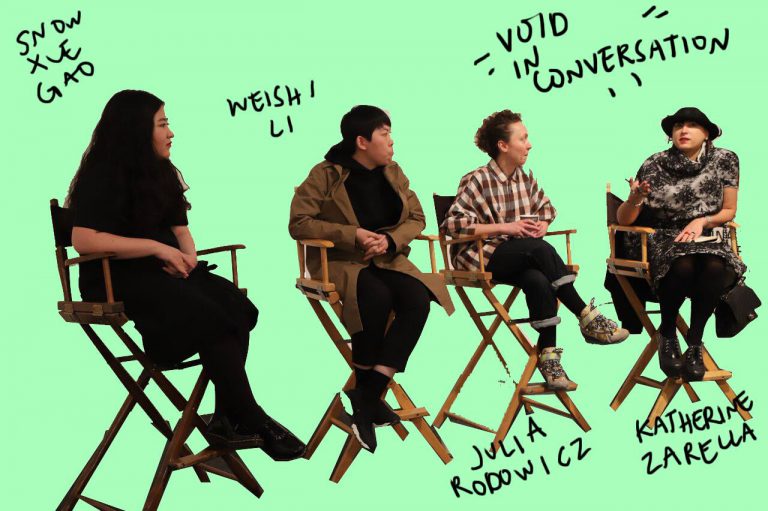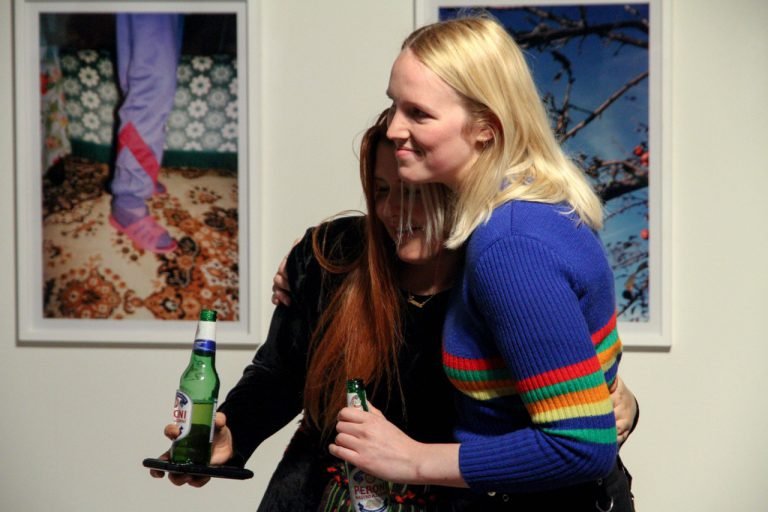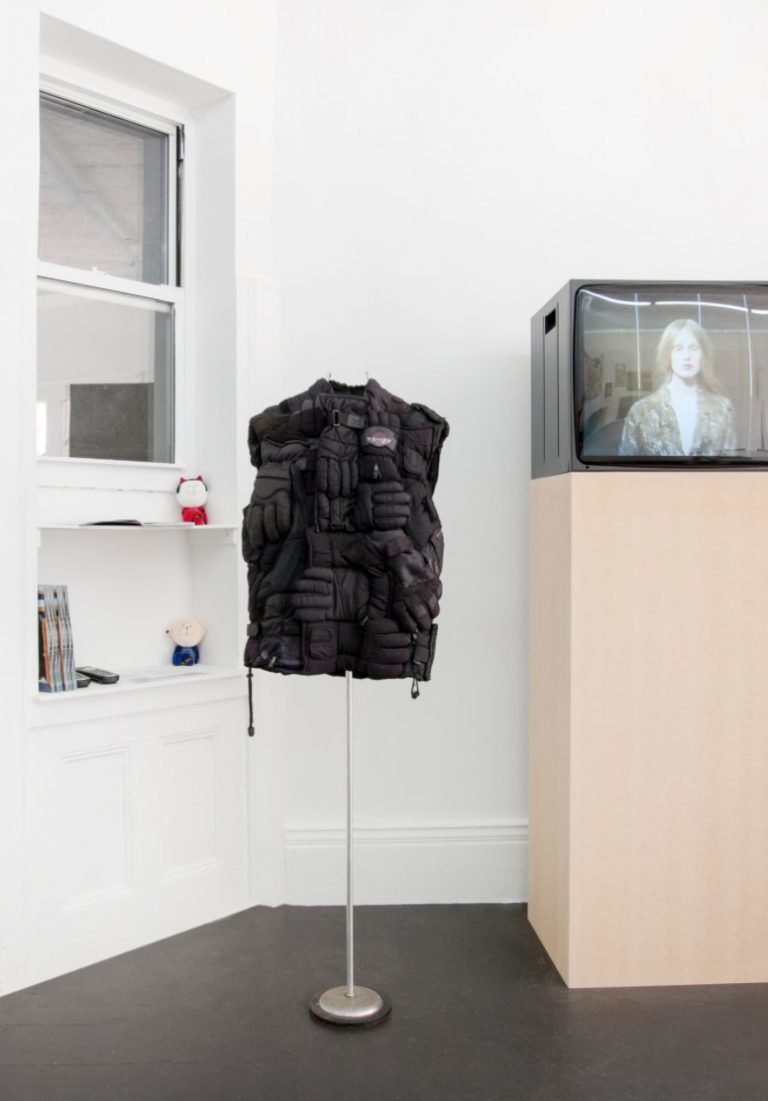VOID is 1 Granary’s global initiative which aims support to young designers. During New York Fashion Week, the team collaborated with Red Hook Labs to expand the exhibition with a series of panel discussions about the current fashion system from an independent designer’s ’point of view. Therefore, moderator Katharine Zarella sounded out Snow Xue Gao, Weishi Li, and Julia Rodowicz and talked about money, the fashion industry’s support system, and being the next hot thing.
“Time-wise, I’m just trying to do everything as early as possible,” says Snow Xue Gao when asked about the fashion schedule. The young designer founded her eponymous brand right after graduating from Parson New School of Art and Design in 2016. Alike big houses such as Comme des Garçons and Gucci, Snow has understood the importance of quickly translating her editorial show pieces into commercial clothing. In order to maintain her business, the young talent even starts working on her commercial pieces first. It is not until one month before the show and after the commercial book has been sent out to the buyers that she remodels the collection into editorial creations. The show itself is merely an opportunity to tell the brand’s story. If young designers want to keep up with the competition’s pace, there’s just no time for creativity — and no money.
“WE HAVE FIVE TO SIX MONTHS TO PERFECT OUR IDEA AND I STILL BELIEVE THIS IS NOT ENOUGH” – JULIA RODOWICZ
Knitwear-designer Julia Rodowicz lays it on the line while discussing adherence to the system. “We don’t have enough money to produce all our own fantasies. We need to come up with something that will end up on somebody’s body, in somebody’s life.” Working in such an oversaturated market and with a schedule demanding four collections every year, young brands, such as the ones participating in the VOID in Conversation panel, find it close to impossible to fully realize ideas. In the end, there are too many clothes on the market. Too many collections even. Zaralla adds that big brands are under constant pressure to design “provoking, thoughtful, and beautifully made” collections as well. She strengthens Julia’s claim that although these business giants have large teams involved in the creation process, in her opinion they create almost nothing exceptional. Time is just too short to do so. No matter how big your brand is.
Is the attempt to change the system a losing game, then? Andrea Jiapei Li’s partner in crime, Weishi Li, disagrees. “I really think that small and young designer brands are changing the system.” Although there is great pressure to produce and keep up with the big houses, Weishi stresses that small brands always have a choice. They still can take control.
“The beginning is the toughest,” admits Snow. Li adds that “for people like us, who can’t afford to pay the studio fee, there is a lot of burden and hidden cost.” Both women point out an important downside of the New York support system. The monetary restrictions make it even harder to keep up with the pace and quality of established brands.
There is one thing, however, that can help any designer out of his or her financial dilemma. Holy social media! Post a picture of a cute dog, have a great follower-base and any job is yours. “I feel it’s such a shame. Get yourself sixty thousand Instagram followers and then you will get a position as creative director,‘ states Rodowicz. It is this shift in quality criteria, which concerns the attendee. Suddenly, fine work, a beautiful design, and well-made clothes seem to be not as important anymore. On the other hand, the social media platform also proves to be highly useful for the fashion industry. Especially for young brands. According to Weishi Li, many buyers even reach out to designers via the social media platform and vice versa. For the upcoming talents, it is still the best way to directly interact with a brand’s audience. “Do what you love, have your audience, have your clients. Sell it to people without being a star on Instagram. I mean hopefully, there is space for both.” says Julia.
The fashion support systems seem like a two-sided sword. You have access to financial support and their network. You receive attention and press during fashion week. However, the hidden costs and lack of long-term investments raise the question of the system’s sustainability. For example, big names won’t hire former designers whose own brands haven’t developed into being the next hot thing. There is no support for them anymore. The designer enters the grey area: too good to be offered a junior position but not good enough to become creative director. In order to prevent these cases from happening, the industry needs to not only improve the support system for emerging designers but also provide long-term opportunities.
Therefore, Snow Xue Gao, Weishi Li, and Julia Rodowicz agree that crucial change is required. Recently graduated designers are unprepared to enter a world outside university’s protective hand. Take over the position of a CEO. Manage a business. Of course, there is never a right answer to how these changes can be achieved. But it’s about time we start the conversation.









